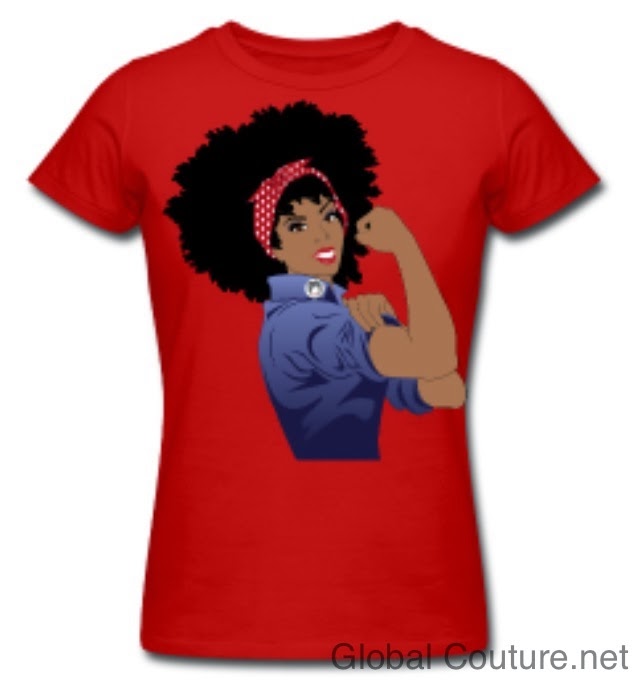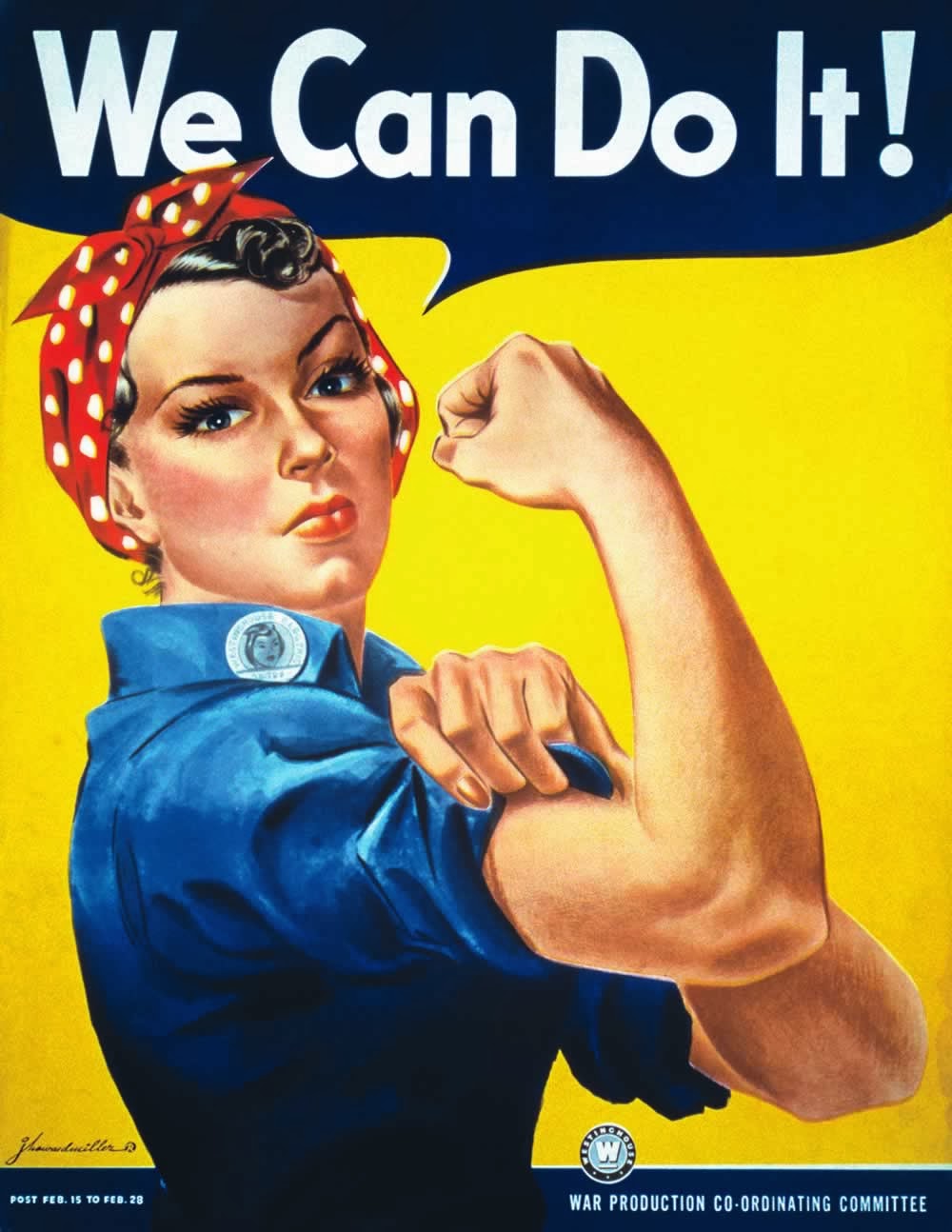A brief history of Rosie:
Before the United States entered World War II, several companies already had contracts with the government to produce war equipment for the Allies. Almost overnight the United States entered the war and war production had to increase dramatically in a short amount of time. Auto factories were converted to build airplanes, shipyards were expanded, and new factories were built, and all these facilities needed workers. At first companies did not think that there would be a labor shortage so they did not take the idea of hiring women seriously. Eventually, women were needed because companies were signing large, lucrative contracts with the government just as all the men were leaving for the service.
Working was not new to women. Women have always worked, especially minority and lower-class women. However, the cultural division of labor by sex ideally placed white middle-class women in the home and men in the workforce. Also, because of high unemployment during the Depression, most people were against women working because they saw it as women taking jobs from unemployed men.
The start of World War II tested these ideas. Everyone agreed that workers were greatly needed. They also agreed that having women work in the war industries would only be temporary.
The United States government had to overcome these challenges in order to recruit women to the workforce. Early in the war, the government was not satisfied with women’s response to the call to work (Rupp 98).
The government decided to launch a propaganda campaign to sell the importance of the war effort and to lure women into working.
They promoted the fictional character of “Rosie the Riveter” as the ideal woman worker: loyal, efficient, patriotic, and pretty (Yellin 43). A song, “Rosie the Riveter”, became very popular in 1942. Norman Rockwell’s image on the cover of the Saturday Evening Post on May 29, 1943 was the first widely publicized pictorial representation of the new “Rosie the Riveter”. This led to many other “Rosie” images and women to represent that image. For example, the media found Rose Hicker of Eastern Aircraft Company in Tarrytown, New York and pictured her with her partner as they drove in a record number of rivets into the wing of a Grumman “Avenger” Bomber on June 8, 1943. Rose was an instant media success (Dabakis 183). In many other locations and situations around the country, “Rosies” were found and used in the propaganda effort. A few months after Rockwell’s image, the most famous image of Rosie appeared in the government-commissioned poster “We Can Do It” (Yellin 44).
Women responded to the call to work differently depending on age, race, class, marital status, and number of children. Half of the women who took war jobs were minority and lower-class women who were already in the workforce. They switched from lower-paying traditionally female jobs to higher-paying factory jobs. But even more women were needed, so companies recruited women just graduating from high school. Eventually it became evident that married women were needed even though no one wanted them to work, especially if they had young children. It was hard to recruit married women because even if they wanted to work, many of their husbands did not want them to. Initially, women with children under 14 were encouraged to stay home to care for their families. The government feared that a rise in working mothers would lead to a rise in juvenile delinquency. Eventually, the demands of the labor market were so severe that even women with children under 6 years old took jobs.

Service Unavailable
The server is temporarily unable to service your request due to maintenance downtime or capacity problems. Please try again later.
Additionally, a 503 Service Unavailable error was encountered while trying to use an ErrorDocument to handle the request.












